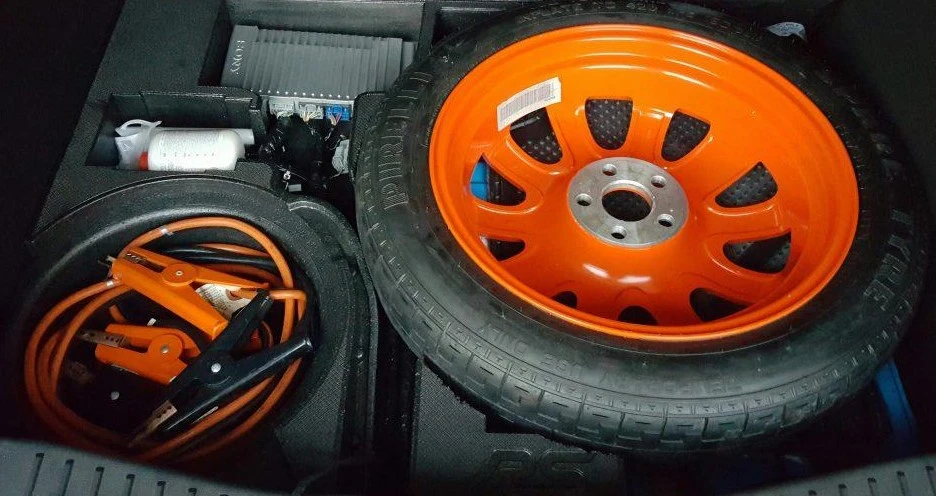immediately
If your tire has a bubble, you need to stop driving immediately! It means that the tire’s internal structure has failed. You can easily lose control of the car with such tires or end up with a flat tire soon after. Furthermore, hitting a curb or potholes can damage your suspension system or your wheel rim.

- Is it safe to drive on a tire with a bubble?
- A tire with a bulge in the tread or sidewall is not safe to drive on and must be replaced. Your tires should be smooth and round. If you notice a bubble on the sidewall, or see a section of tread bulging, it’s a sign that something is very wrong. Is it safe to drive with a bubble in your tire? The answer is a firm NO.
- What does a tire bubble feel like?
- As the bubble forms on the outside of the tire, it should be noticeable. If the bubble is on the tire tread, then you may notice a bumping sensation as you drive. Tire bubbles are a serious issue that you’ll want to address immediately.
- When should you replace a small bubble in a tire?
- Replace a tire once a bulge on the sidewall is noticed. You can continue driving, albeit at a slower speed, avoiding any risky maneuvers and abrupt braking that may lead to tire bursts. It is recommended that the vehicle is unloaded and the tire pressure reduced by about 10%. Is a small bubble in a tire dangerous?
- How far can you drive with a big bubble?
- If you have to use a tire with a big bubble, try and limit your speed to around 80km/h and less to prevent severe loss of control of the car if you have a blow out. Safely? Less than one mile. Practically?
Do tire bubbles grow?
When you see a bubble, this is a sign of a major problem you need to address quickly. As you drive in different road conditions and speeds, the bubble may get much bigger. The longer you wait, the bigger it gets! Eventually the layer will burst leaving you with a flat tire.
- What is a tire bubble?
- A tire bubble is basically the surface of your tire bulging out. It can appear both on the footprint and the sidewall, and it is generally caused by driving impacts. A bubble in your tire can also form from a weak spot that can be the result of extensive footprint wear. However, the most common spot for air bubbles is the sidewall.
- What causes a tire to burst?
- With the force from the car and the constant pressure pushing on it, the bubble could cause the tire to burst. As you drive, the air is going to continue escaping through the inner lining, especially if the bubble is in the sidewall. At some point, the rubber will stop holding.
- Is it safe to drive with bubbles in tires?
- Driving with bubbles in tires is not safe. A common symptom of bubbles in tires is a slight wobble when driving. When the inner lining on the tire is weak and develops bubbles, it’ll not be strong enough to protect the tire from bursting when it has a rough impact on the road. Tire bubbles mostly occur on the sidewall.
- What is a tire bulge?
- Tire bulge is a version of pimples on car tires. The only difference between these bulges and the pimple on your face is the bubbles will lead the tires in a recycling state. Q: Can you drive on a tire with a bubble?
How far can I drive on a spare tire?
Nearest AAA Approved Auto Repair Facilities You should not drive over 50 mph and no more than 50 miles with a donut-type spare tire. Driving for long distances on a spare tire can potentially cause damage to other car parts, including the transmission.

- How long can you Drive on a spare tire?
- If you have a donut spare tire, you should not drive more than 50 miles and no faster than 40 mph, but it is highly recommended to replace it as soon as possible. If you have a full-size spare tire, it’s no problem to drive as far as with the other tires.
- How far can you drive with a donut tire?
- A general rule of thumb is to drive no farther than 70 miles and no faster than 50 miles per hour before replacing your donut with a new tire. The biggest reason why you should avoid prolonged use of space-saver or donut tires is that they have little to no tread, making the spare vulnerable to road hazards and projectiles.
- How do I choose a spare tyre?
- Watch your distance – A spare tyre is a temporary solution, so only drive as far as a garage or tyre dealer to repair or replace your original tyre. A full-size tyre that matches the current ones on your vehicle. If you’re using a full-size matching tyre as your spare, remember to make it part of your vehicle’s tyre rotation .
- What is the speed limit for temporary spare tyres?
- Watch your speed if using a temporary spare – Follow the instructions from your vehicle and tyre manufacturer regarding your speed as well as driving distance, but speed is generally capped at 50mph for temporary spare tyres.






